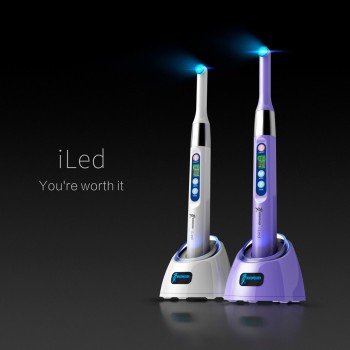Today, almost all resin composites, dental adhesives and adhesive cements utilize light energy for complete polymerization, which further determines the long-term clinical success of a procedure. While much attention has been given to the details of diagnosis, preparation and the development of improved adhesives and resins, light curing is often taken for granted.

Using a curing light accomplishes two things. In the first place, it makes sure that the resin cures properly and adheres evenly. When applying fillings, this is critical to keep the filling in place in the mouth. For sealants, the curing light limits the risk of cracks and other problems with the sealant. With adhesives for implants and braces, the rapid, even cure is also designed to limit problems in the future.
The dental curing light also increases patient comfort by rapidly curing resins so that the patient is not forced to sit in discomfort while the resin sets. Since the mouth usually needs to be held open wide and may be dry for the procedure, patients usually want the procedure to end as quickly as possible so that they can close their mouths and remoisturize the dried oral membranes. Using a curing light gets patients in and out of the chair quickly so that the experience of irritation and pain is limited.
There have been significant improvements in the curing light technology in recent years. Today, dental manufacturers can develops variety of curing lights, from plasma arc to argon laser curing lights. That said, two curing lights commonly used in the dental operatory are Quartz Tungsten Halogen (QTH) lights and Light-emitting diode (LED) lights.
Quartz Tungsten Halogen (QTH) lights. These lights have a quartz bulb with a tungsten filament that irradiate both UV and white light, which must be filtered to remove heat and all wavelengths except those in the violet-blue range. The lights have broad emission spectrum of approximately 390 nm to 500 nm, which is capable of curing all composites.
Curing lights vary according to their features; power intensities and energy delivered to the tooth; timing for use; availability of accessories; configuration of curing probes/tips available for a device; and price. The ideal light-curing unit features a broad-emission spectrum, sufficient light intensity, minimal drop off of energy with distance (collimated beam), a large emission window of light probe, ease of use and easy maintenance.